Katsuhito Fujiu
Deep-learning-based electrode action potential mapping (DEAP Mapping) from annotation-free unipolar electrogram
Aug 07, 2024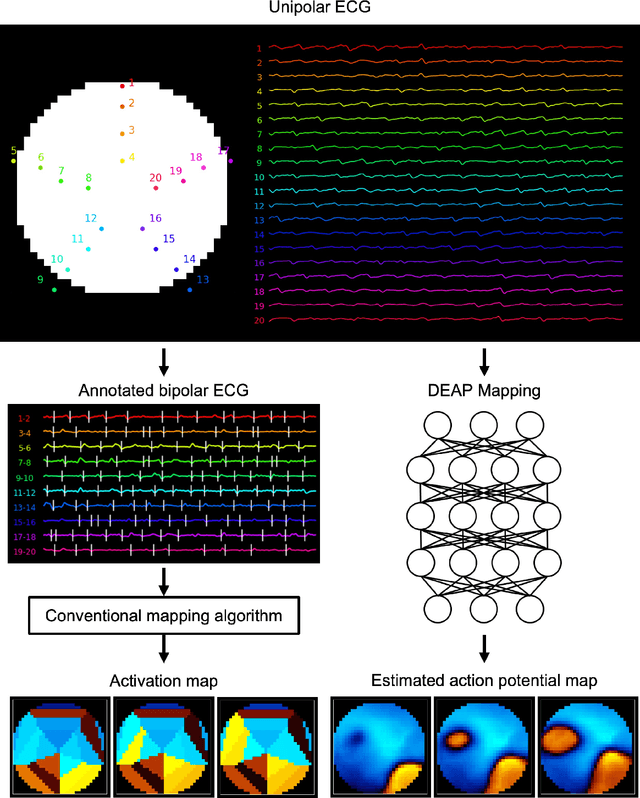
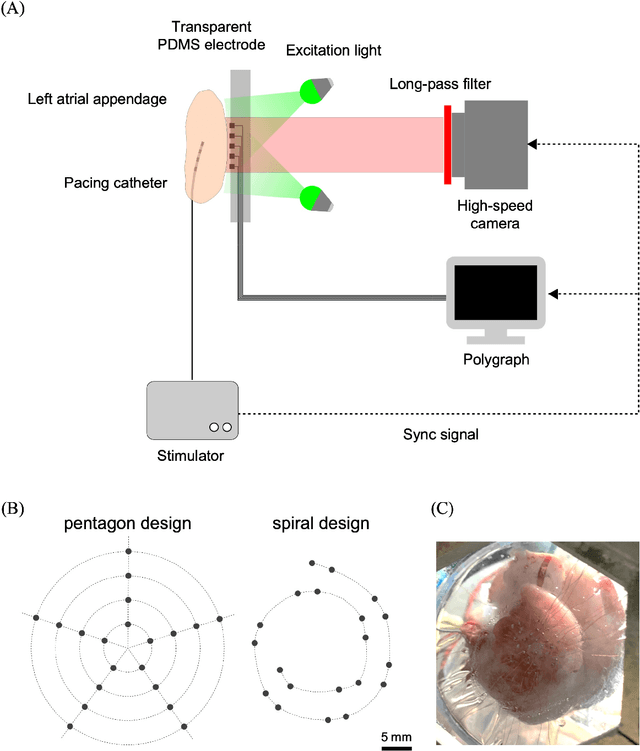
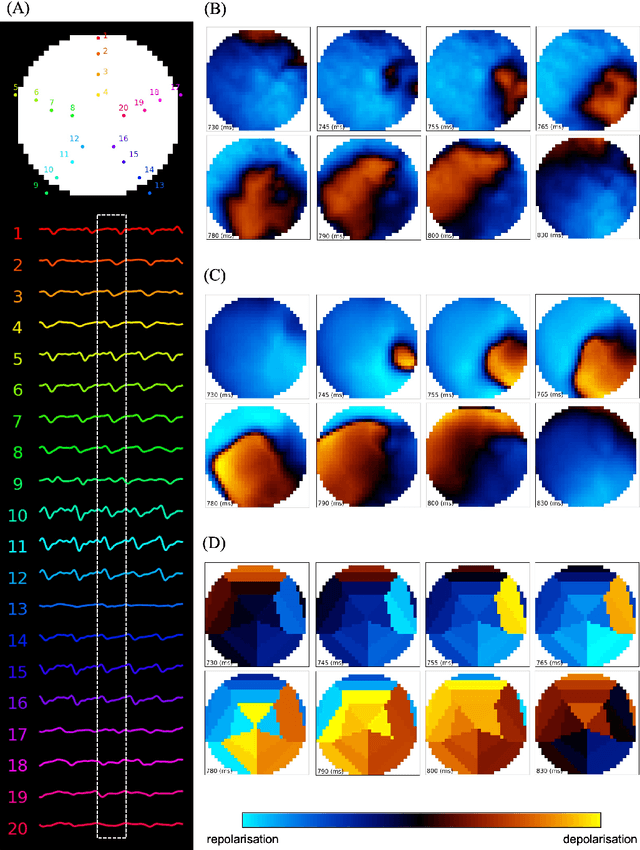
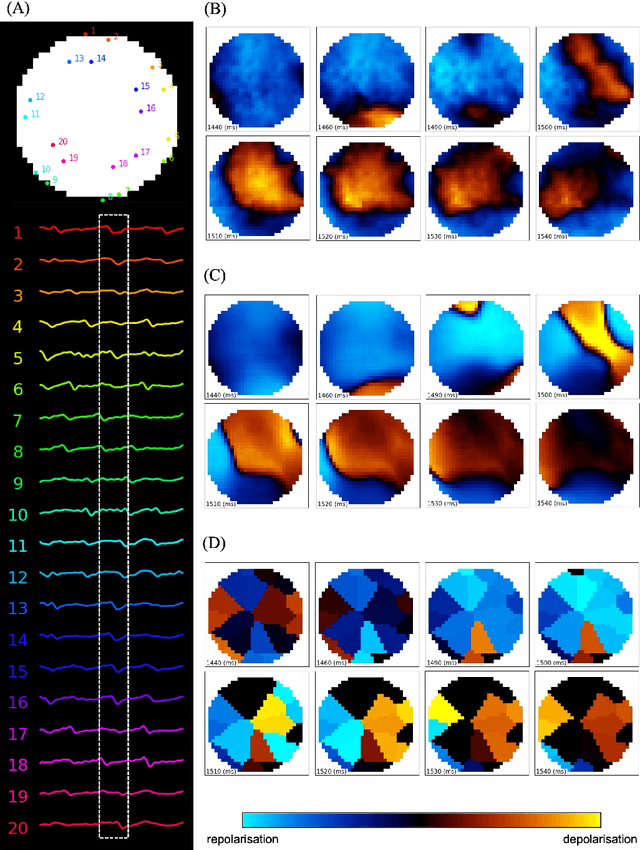
Abstract:Catheter ablation has limited therapeutic efficacy against non-paroxysmal atrial fibrillation (AF), and electrophysiological studies using mapping catheters have been applied to evaluate the AF substrate. However, many of these approaches rely on detecting excitation timing from electrograms (ECGs), potentially compromising their effectiveness in complex AF scenarios. Herein, we introduce Deep-learning-based Electrode Action Potential Mapping (DEAP Mapping), a deep learning model designed to reconstruct membrane potential images from annotation-free unipolar ECG signals. We conducted ex vivo experiments using porcine hearts (N = 6) to evaluate the accuracy of DEAP Mapping by simultaneously performing fluorescence measurement of membrane potentials and measurements of epicardial unipolar ECGs. Membrane potentials estimated via DEAP Mapping were compared with those measured via optical mapping. We assessed the clinical applicability of DEAP Mapping by comparing the DEAP Mapping's estimations from clinically measured catheter electrode signals with those from established electrode-mapping techniques. DEAP Mapping accurately estimated conduction delays and blocks in ex vivo experiments. Phase variance analysis, an AF substrate evaluation method, revealed that the substrate identified from optical mapping closely resembled that identified from DEAP Mapping estimations (structural similarity index of >0.8). In clinical evaluations, DEAP Mapping estimation observed several conduction delays and blocks that were not observed with existing methods, indicating that DEAP Mapping can estimate excitation patterns with higher spatiotemporal resolution. DEAP Mapping has a potential to derive detailed changes in membrane potential from intra-operative catheter electrode signals, offering enhanced visualisation of the AF substrate from the estimated membrane potentials.
Use of Ghost Cytometry to Differentiate Cells with Similar Gross Morphologic Characteristics
Mar 22, 2019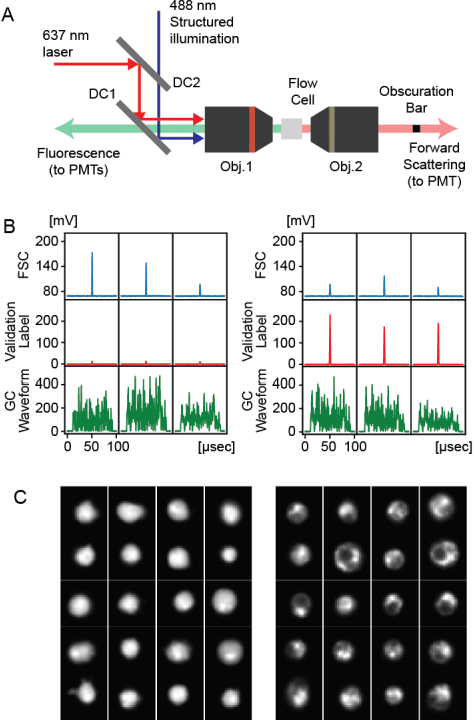
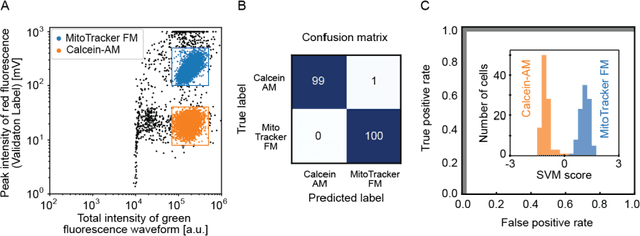
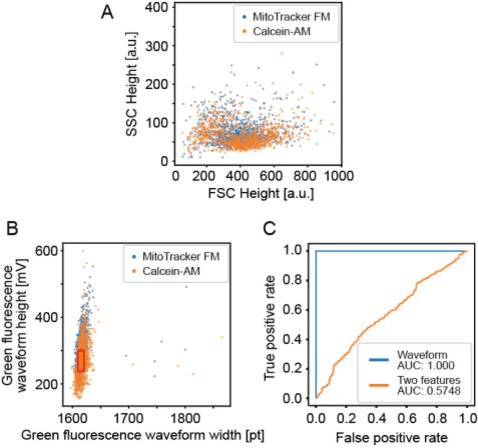
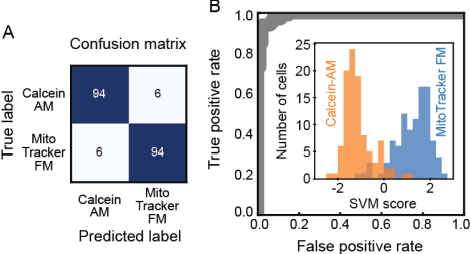
Abstract:Imaging flow cytometry shows significant potential for increasing our understanding of heterogeneous and complex life systems and is useful for biomedical applications. Ghost cytometry is a recently proposed approach for directly analyzing compressively measured signals, thereby relieving the computational bottleneck observed in high-throughput cytometry based on morphological information. While this image-free approach could distinguish different cell types using the same fluorescence staining method, further strict controls are sometimes required to clearly demonstrate that the classification is based on detailed morphologic analysis. In this study, we show that ghost cytometry can be used to classify cell populations of the same type but with different fluorescence distributions in space, supporting the strength of our image-free approach for morphologic cell analysis.
 Add to Chrome
Add to Chrome Add to Firefox
Add to Firefox Add to Edge
Add to Edge